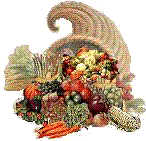
Return
you came from
Foods must be protected from dehydration while being held at the correct temperatures. Do this by wrapping them in heavy moisture proof paper or airtight freezer bags or containers for freezing.
For refrigerating--
Store fish, liver, ground meat loosely wrapped in the coldest part of the refrigerator, use within one day.
Milk is stored below 40 degrees to prevent bacterial invasion. Only put out a container that will be used up- taking a gallon container of milk in and out of the refrigerator many times, shortens its keeping time and raises bacteria counts. Don't return milk which has been out to serve back to the storage container, it can contaminate the whole container.
Bread dries out faster in the refrigerator than in the breadbox, but is less subject to molds.
Fresh chicken should have the giblets removed, be rinsed, stored wrapped in a plate or bowl (it drips) and used within two days. The liquid can be very contaminated.
Fresh fruits and vegetables, except berries, should be rinsed in cold water, have the dead leaves, tops, etc. removed. Berries are washed just before use. Greens need to be protected from air while excess moisture is soaked up, so put newspaper or paper towelling in the bottom of each bag or container. If you are storing large amounts of leafy greens, you can layer them in between sections of newspaper. Protect from freezing.
Most fruits keep well if refrigerated. Thick-skinned ones can be kept at room temperature. All fruits should be checked daily and over-ripe or bruised fruit removed and used immediately.
Potatoes and onions keep better if not refrigerated and not stored near each other. Potatoes put in refrigerated storage require a week or more at room temperature to restore their normal starch-sugar balance.
Hard cheese can be stored at room temperature below 80. To prevent mold, wrap cheeses in plastic wrap or vinegar-rinsed cheese cloth.
Whole uncracked eggs may be safely stored at room temperature for 3 weeks, although quality holds much better under refrigeration.
Open canned food may safely be stored covered in the can unless it is an acid fruit or vegetable, such as tomatoes, pineapple or sauerkraut. These and their juice need to be stored in glass or plastic.
Tightly cover every container in the refrigerator.
Over supplies of cooked grains, beans and stock may be frozen for future use. All freeze very well.
Put cooked food into the refrigerator immediately. box. Pour all warm foods being chilled to pans that form a layer of 2 inches or less, and stir large pans occasionally while they cool. Setting the hot pan in an ice bath will cool a large pan faster and safer. Contrary to popular opinion, letting the pan cool at room temperature merely allows it to spend longer in the bacteria-breeding range of 40-160 degrees.
Temperature of ingredients including eggs, milk, flour, sauces, etc. matters in quantity cooking. You can almost double the cooking time of a dish if your ingredients are cold when you start baking.
Always defrost large quantities of food in the refrigerator, allowing about 24 hours for each 8 lbs or half gallon. This prevents having a chicken package with a frozen middle and an outside warm enough to support bacterial growth.
